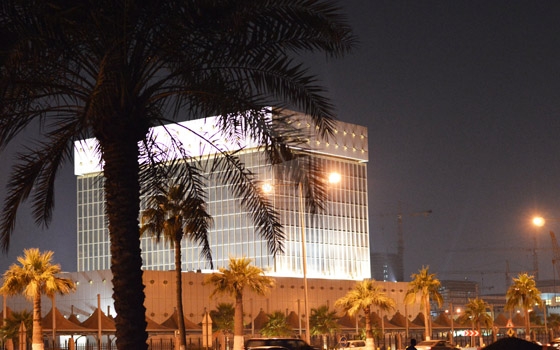The outlook for Qatar's banking system remains stable, unchanged since 2010, and banks' lending is expected to grow between 20 percent and 25 percent over the next 18 months, says Moody's latest annual Banking System Outlook report on Qatar.
However, the report notes that banks' still-high dependence on short-term foreign market funding leaves them vulnerable to market conditions.
The outlook reflects Qatar's benign economic environment and the rating agency's expectation that Qatari banks will maintain strong financial metrics, including low levels of non-performing loans (NPLs), robust earnings and sound capitalization.
However, the report says that these positive factors are counterbalanced by (1) an undiversified economy heavily reliant on the oil and gas sector; (2) the system's relatively high dependence on short-term foreign funding; and (3) a still-developing corporate-governance and risk-management culture.
Moody's expects that the government's extensive infrastructure investment programme will boost banks' business opportunities over the 12 to 18 month outlook period and lead to lending growth of between 20 percent and 25 percent. However, the rating agency acknowledges that downside risks to the supportive operating environment stem from increased geopolitical tensions that could threaten Qatar's export capacity and, over the longer term, the impact of adverse changes in oil and gas prices (the hydrocarbon sector accounts for around 60 percent of the country's GDP).
Qatari banks' asset quality will be supported by the country's strong economic environment, the substantial government spending and the sizeable proportion of government-related loans (43 percent of the total). As such, Moody's expects that the system's NPLs will remain at around two percent of gross loans over the next 12 to 18 months.
However, the banks' asset quality remains exposed to event risk given (1) the high single-party exposures and opaque transparency surrounding local conglomerates; (2) the still-questionable commercial rationale for many of the government-related projects financed by the banks; (3) rapid credit expansion, which raises questions about banks' underwriting standards and ability to manage related risks; and (4) the moral hazard that past government interventions have created. In addition, the banks' still-high dependence on short-term foreign-market funding leaves banks vulnerable to market conditions.
The system's Tier 1 ratio will likely trend down to 15 percent to 16 percent by the end of 2013, as banks continue to finance their fast-growing balance sheets domestically and abroad. However, Moody's notes that projected capitalization metrics are sufficient to absorb losses and remain above the regulatory minimum of 10 percent even under the rating agency's "adverse" scenario, which considers the impact of a sustained drop in oil and gas prices and significant contraction in economic activity.
Moody's expects that Qatari banks' 2013 bottom-line profitability metrics will remain broadly stable, with the return-on-average-assets ratio ranging between 2.2 percent and 2.4 percent. Higher lending volumes, low provisioning requirements and banks' low cost bases will support the system's overall profitability. However, the banks' net interest margins will likely decline, due to the regulator's imposition of interest-rate caps on retail lending and banks' increased exposure to lower-yielding project finance lending.
The Peninsula
10 April
























































